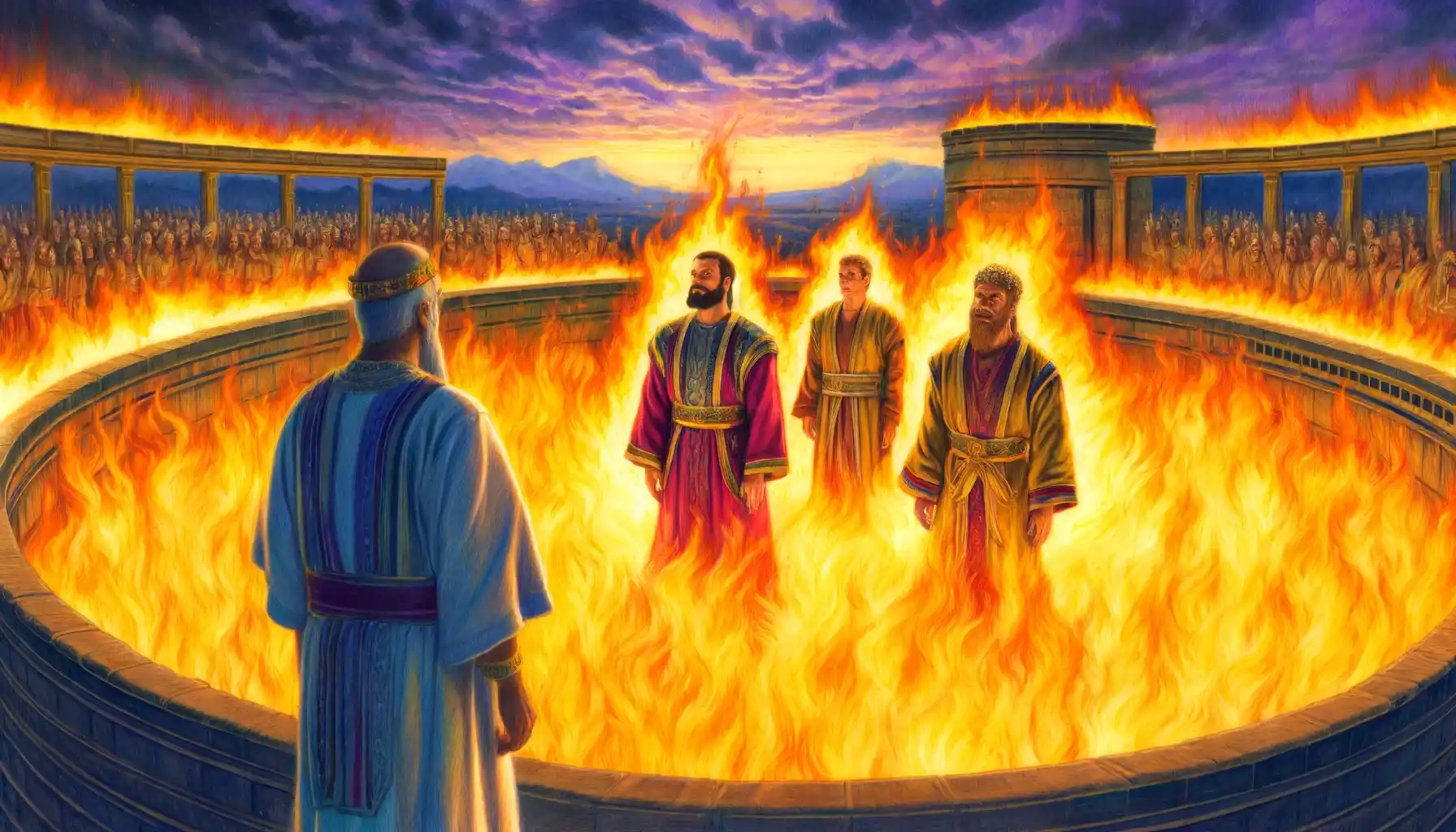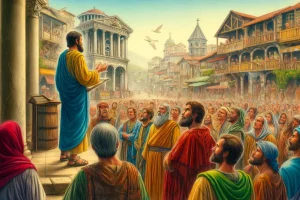
The Book of Daniel
The Book of Daniel is a fascinating and complex text within the Hebrew Bible and Christian Old Testament. Here are some key quick facts about this book:
- Authorship and Date: Traditionally attributed to Daniel, who was taken into Babylonian captivity in 605 BCE, the book is actually thought by many scholars to have been written in the mid-2nd century BCE during the Maccabean Revolt.
- Language: The Book of Daniel is written in two languages: Hebrew (chapters 1, 8-12) and Aramaic (chapters 2-7), reflecting its diverse audience and historical context.
- Structure: Daniel is divided into two main sections: the first six chapters are court tales in a narrative format, while chapters 7-12 contain apocalyptic visions.
- Themes:
- Faithfulness under Pressure: Daniel and his companions consistently demonstrate faithfulness to God despite the pressures of life in a foreign court.
- God’s Sovereignty: The book emphasizes God’s control over history and kingdoms, regardless of human actions.
- Apocalyptic Visions: The latter chapters provide some of the Bible’s most detailed prophecies about future events, including the end times.
- Key Stories and Visions:
- The Fiery Furnace: Shadrach, Meshach, and Abednego are delivered from the fiery furnace.
- Daniel in the Lions’ Den: Daniel survives a night in a den of lions due to his faithfulness to God.
- Nebuchadnezzar’s Dream: Daniel interprets the king’s dream of a statue made of various metals, symbolizing the rise and fall of empires.
- The Writing on the Wall: Daniel interprets the mysterious handwriting that appears during Belshazzar’s feast, predicting the fall of Babylon.
- Theological Significance: Daniel contributes significantly to Jewish and Christian eschatology, particularly with its detailed visions of the end times and the coming of the “Son of Man,” a figure significant in later Christian theology.
- Historical Impact: The apocalyptic visions and the character of Daniel have inspired numerous interpretations in religious thought, literature, and art across centuries.
The Book of Daniel is a seminal text within both the Hebrew Bible and the Christian Old Testament, notable for its blend of apocalyptic literature and narrative. The book is set during the Babylonian exile, a time of great turmoil for the Jewish people, and it addresses themes of perseverance, faith, and divine sovereignty. Here is a detailed analysis of the Book of Daniel:
1. Historical Context and Authorship
The narrative portion of Daniel (chapters 1-6) is set in the 6th century BCE, during the Jewish exile after King Nebuchadnezzar of Babylon besieged Jerusalem. However, most scholars believe the book was written in the mid-2nd century BCE, during the Maccabean Revolt against the Seleucid Empire. This historical setting helps explain the book’s emphasis on themes of resistance and endurance in the face of oppressive foreign rule.
2. Structure
The Book of Daniel is divided into two distinct parts:
- Chapters 1-6: These chapters consist of court tales that narrate the experiences of Daniel and his friends within the Babylonian and Persian empires. These stories are characterized by their didactic nature, aimed at demonstrating the superiority of the God of Israel over pagan rulers and gods.
- Chapters 7-12: This section contains apocalyptic visions where Daniel sees the future events that symbolize the trials and ultimate deliverance of God’s people.
3. Themes
- Faithfulness and Deliverance: Daniel and his friends exemplify unwavering faith in God, despite the existential threats they face for their adherence to Jewish laws and customs. Their deliverance in miraculous ways (e.g., surviving the fiery furnace and the lions’ den) serves to reinforce the message that God protects and saves those who remain faithful.
- God’s Sovereignty Over History: The visions in Daniel assert God’s control over all human events and kingdoms. This sovereignty is depicted through the dream of Nebuchadnezzar and the subsequent interpretation by Daniel, which outlines a succession of empires, culminating in the eternal kingdom of God.
- The Apocalyptic Vision: Daniel’s apocalyptic visions are complex and full of symbolism, portraying intense conflicts and ultimate triumphs. These visions extend hope to the oppressed by affirming that worldly empires are transient and that God’s kingdom will ultimately prevail.
4. Literary and Theological Significance
- Apocalyptic Literature: Daniel is foundational in the genre of apocalyptic literature, characterized by symbolic imagery, visions, and angelic mediation. It has profoundly influenced Jewish and Christian eschatological views, particularly concerning the end times and the judgment of God.
- Prophetic Literature: Although different in style from the typical prophetic books, Daniel contributes to prophetic themes with its focus on repentance, humility, and the moral testing of the faithful.
- The Son of Man: Daniel 7 introduces the “Son of Man” figure, a heavenly being who receives dominion and glory. This concept becomes significant in Christian eschatology, influencing New Testament writings and Christological interpretations.
5. Impact on Religious Thought
Daniel’s influence extends beyond the Jewish faith; it is also significant in Christian eschatology, inspiring commentary and interpretation throughout the centuries. Its narratives of faith and visions of the future provide a rich source of theological and moral instruction.
6. Symbolism and Interpretation
The symbols in Daniel—beasts representing empires, the Ancient of Days, and the mysterious “Son of Man”—invite deep theological and existential contemplation. Interpretations vary widely, from historical analyses relating the visions to specific historical events to more spiritual interpretations focusing on the timeless struggle between divine and worldly powers.
In conclusion, the Book of Daniel offers a rich tapestry of narrative and visionary prophecy, providing enduring insights into divine justice, the role of faith in adversity, and the ultimate sovereignty of God.
Tag:angelic visions, apocalyptic visions, Babylonian exile, Biblical Narrative, court tales, Daniel, deliverance, divine sovereignty, end times, Faithfulness, historical context, Jewish faith, Maccabean Revolt, Nebuchadnezzar, Persian Empire, prophecy, resistance, symbolic imagery, theological impact



